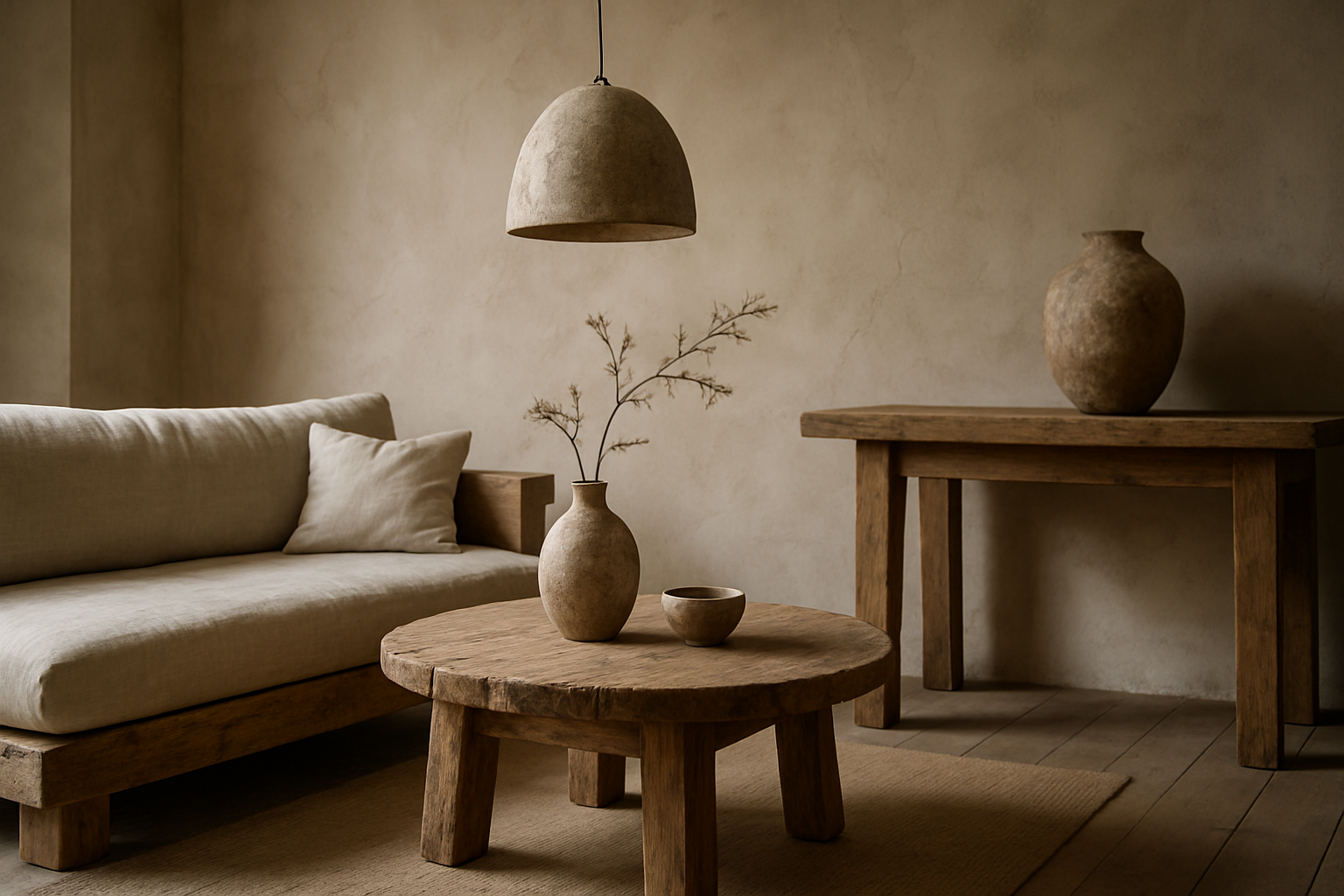Embracing Wabi-Sabi: The Art of Imperfect Beauty in Home Design
The beauty of imperfection, the allure of the worn, and the charm of the incomplete - these are the essence of wabi-sabi, an ancient Japanese philosophy that's quietly revolutionizing modern home design. As our lives become increasingly digital and polished, there's a growing desire for authenticity and connection to the natural world in our living spaces. Wabi-sabi offers a refreshing antidote to the pursuit of perfection, inviting us to find beauty in the flawed and fleeting.

In its early days, wabi-sabi was closely associated with the tea ceremony. Tea masters sought out humble, imperfect vessels that embodied the essence of simplicity and naturalness. These objects, often handmade and showing signs of wear, were prized for their ability to evoke a sense of tranquility and connection to nature.
As the philosophy evolved, it began to influence various aspects of Japanese culture, from architecture to pottery, and eventually made its way into the realm of interior design. Today, wabi-sabi has transcended its cultural origins and is finding resonance with people around the world who seek a more mindful and authentic approach to home decor.
The Principles of Wabi-Sabi in Home Design
At its core, wabi-sabi in home design is about creating spaces that feel authentic, lived-in, and connected to nature. It’s a departure from the sleek, minimalist aesthetics that have dominated interior design trends in recent years. Instead, wabi-sabi embraces imperfections, celebrates natural materials, and honors the passage of time.
One of the key principles of wabi-sabi is the use of natural materials. Wood, stone, clay, and natural fibers are favored for their inherent textures and imperfections. These materials age gracefully, developing a patina over time that adds character and depth to a space. In a wabi-sabi inspired home, you might find rough-hewn wooden beams, handmade ceramics with visible brush strokes, or stone floors with natural variations in color and texture.
Another important aspect of wabi-sabi design is the appreciation of simplicity. This doesn’t mean stark minimalism, but rather a thoughtful curation of objects and furnishings. Each item in a wabi-sabi space should serve a purpose or hold personal meaning. Clutter is minimized, allowing the beauty of individual pieces to shine through.
Incorporating Wabi-Sabi Elements in Your Home
Embracing wabi-sabi in your home doesn’t require a complete overhaul of your existing decor. It’s more about shifting your perspective and making small, intentional changes that bring more authenticity and mindfulness to your space.
Start by decluttering and simplifying your surroundings. Remove items that don’t serve a purpose or bring you joy. This creates space for the things that truly matter and allows you to appreciate the beauty of individual objects.
Introduce natural materials and textures into your home. Consider adding a rustic wooden coffee table, linen curtains, or handmade clay pots. These elements bring warmth and character to a space while connecting you to the natural world.
Don’t be afraid of imperfections. That antique dresser with a few scratches or the handwoven rug with slight irregularities? These are perfect examples of wabi-sabi beauty. Embrace the stories and character that these imperfections bring to your home.
The Color Palette of Wabi-Sabi
While wabi-sabi doesn’t prescribe a strict color palette, it generally favors muted, earthy tones that evoke a sense of calm and connection to nature. Think soft greys, warm browns, and gentle greens. These colors create a soothing backdrop that allows the textures and forms of natural materials to shine.
That’s not to say that brighter colors have no place in a wabi-sabi inspired home. A pop of vibrant color can be a beautiful contrast to the overall muted palette, especially when it comes from a natural source like a bouquet of wildflowers or a bowl of fresh fruit.
When choosing paint colors or textiles, opt for those with depth and subtle variations. A wall painted in a lime wash, for example, will have more character and warmth than one covered in flat, uniform paint.
Wabi-Sabi and Sustainability
One of the most compelling aspects of wabi-sabi design is its inherent sustainability. By valuing imperfection and age, wabi-sabi encourages us to keep and cherish objects for longer, rather than constantly replacing them with the newest trend.
This philosophy aligns perfectly with the growing movement towards sustainable living and circular economy principles. Instead of buying mass-produced furniture that will be discarded in a few years, wabi-sabi encourages investment in quality pieces that will age beautifully and last for generations.
Moreover, the emphasis on natural materials in wabi-sabi design often leads to more environmentally friendly choices. Wood, stone, and natural fibers are generally more sustainable than synthetic materials, especially when sourced responsibly.
The Emotional Impact of Wabi-Sabi Spaces
Perhaps the most profound effect of wabi-sabi design is its impact on our emotional well-being. In a world that often feels chaotic and demanding, a wabi-sabi inspired home offers a sanctuary of calm and authenticity.
By surrounding ourselves with objects that bear the marks of time and use, we’re reminded of the beauty of impermanence and the value of lived experiences. This can foster a sense of gratitude and mindfulness in our daily lives.
Moreover, the emphasis on simplicity and connection to nature in wabi-sabi design can help reduce stress and promote relaxation. Studies have shown that exposure to natural materials and textures can lower cortisol levels and improve overall well-being.
Wabi-Sabi: A Timeless Approach to Home Design
As we move forward in an increasingly digital and fast-paced world, the principles of wabi-sabi offer a timeless approach to creating homes that feel authentic, peaceful, and deeply connected to the natural world.
By embracing imperfection, celebrating natural materials, and finding beauty in simplicity, we can create living spaces that not only look beautiful but also nurture our well-being and foster a more mindful way of living.
The beauty of wabi-sabi lies in its flexibility and personal nature. It’s not about following strict rules or achieving a certain look, but rather about cultivating a mindset of appreciation for the imperfect, the humble, and the authentic. In doing so, we can transform our homes into true reflections of ourselves and our values, creating spaces that tell our stories and evolve with us over time.





